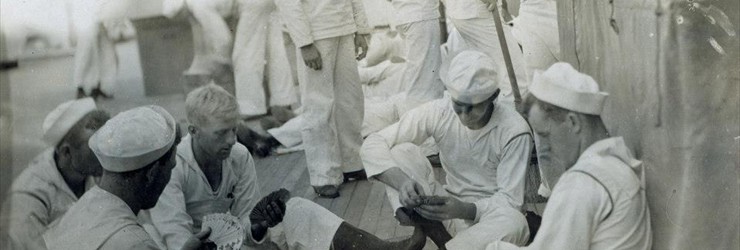Underwater archaeologists have been interested in the many elements that make up the maritime cultural landscape such as shipwrecks, wharves, boatyards an place names. What has not received as much attention are the ways that the maritime cultural landscape has been represented in music, images, and film. The Maritime Cultural Resource Center presents examples of how maritime culture is represented in these media forms. Each selection is accompanied by commentaries by either historians or the performers whose work is presented here.
The Cinema Gallery presents early twentieth century films dealing with maritime themes. Film historians, maritime historians, and underwater archaeologists present their impressions on where these films fit into the history of cinema and how they reflect Hollywoods depiction of maritime culture.
In our Music Gallery we explore traditional maritime chanties and songs. The performers who have donated mp3s of their renditions of these pieces also provided notes on the songs' origin. Some recently composed pieces demonstrate how maritime culture continues to influence the creation of new music. Maritime historian Peter McCracken provides additional context for the pieces in his introduction to the Music Gallery.
When completed our Art Gallery will cover a range of projects from how art and archaeology intersect to how maritime themes have been represented in classic works throughout history. Our Images Gallery will explore ways in which photos and illustrations reflect both maritime subjects and also the messages their creators intended their audience to receive. The gallery will feature representative samples from maritime image collections from around the world.
Taken together the Maritime Cultural Resource Center demonstrates how the maritime cultural landscape transcended physical barriers to reach a wider non maritime audience, thus extending maritime culture to those who live outside the traditional maritime realm. We hope this non archaeological collection will be helpful for teachers, students, and the general public as they explore our maritime past. So, make some popcorn and watch pirates, naval battles, and whalers and compare your impressions to those of our guest commentators. After that listen to some great music and delve a little deeper into their origins. Explore some of the amazing images and art and reflect on how all of this, added to what maritime historians and underwater archaeologists have learned, paints a fuller picture of the maritime cultural landscape. Enjoy!
- Dr. T. Kurt Knoerl, Director, The Museum of Underwater Archaeology









